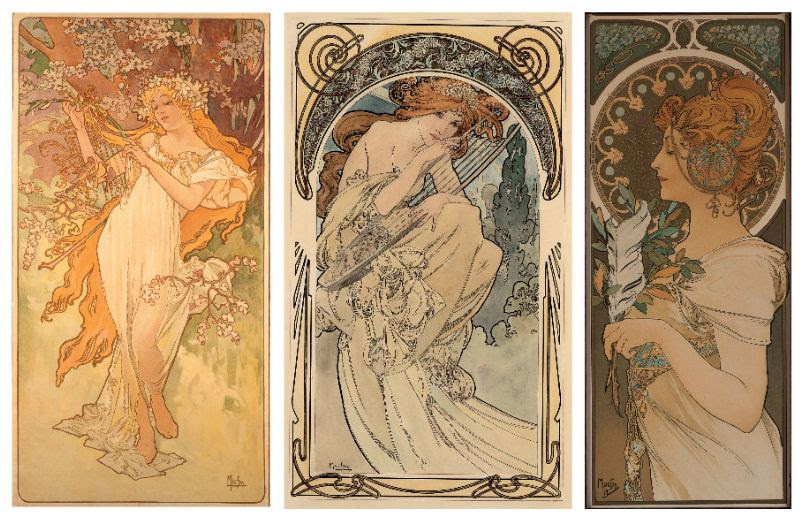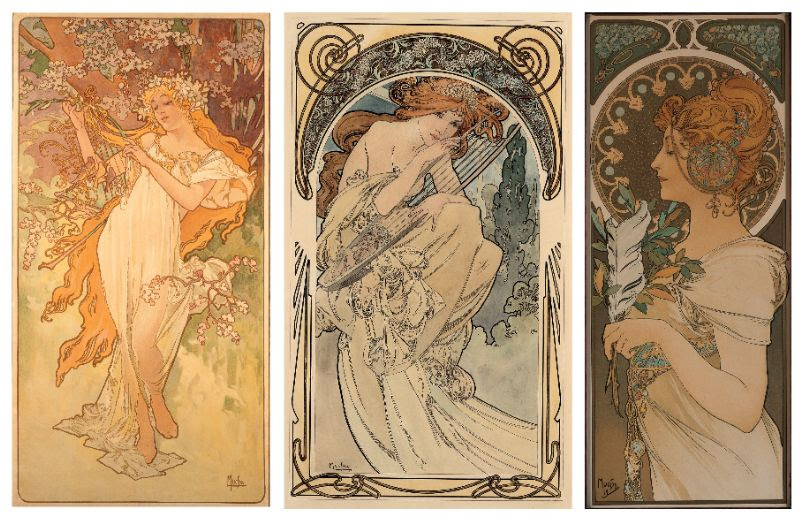[ad_1]

The Lucas Museum owns 60 works by Alphonse Mucha, whose work has been used in several tarot decks. From left, Four Seasons – Spring – #1 of 4, ca. 1896; Allegorie de la musique, ca. 1898; and La Plume, ca. 1899.
COURTESY LUCAS MUSEUM OF NARRATIVE ART, LOS ANGELES
Though the hotly anticipated Lucas Museum of Narrative Art in Los Angeles is still without an opening date, the institution has begun to slowly roll out public programming with the aim of connecting with the community in South L.A., where its arrival has been controversial, with some activists suggesting it could gentrify the historically low income neighborhood.
On Friday, October 18, the Lucas Museum will hold one of its first major programs, “The Art of the Card—Tarot and Lotería,” on the South Lawn of Exposition Park, where it is eventually planning to open a 300,000-square-foot museum, a project estimated at $1.5 billion. The event will explore the visual connections between two different kinds of playing cards. In particular, the event will look at the work of an artist the Lucas Museum has collected in-depth: Alphonse Mucha, whose work has been widely used on tarot decks.
“Combining tarot and lotería seemed like a natural fit,” Erin M. Curtis, a curator at the Lucas, told ARTnews. “Both cards enjoy widespread use and recognition because they feature compelling artwork that has been mass reproduced. Both card decks use this artwork to communicate narratives about the human experience.”
Curtis also pointed to the historical connection shared by tarot and lotería decks, which both have roots dating to 15th-century Italy. Over the years, people have used the cards’ imagery to create “narrative in the course of divination and gameplay,” Curtis said, adding the decks have “transcended their original use in gameplay to become powerful cultural symbols—tarot, through its incorporation into mystic and occult practices, and lotería, through its identification with Mexican and Latinx culture.”
On deck for Friday’s festivities are workshops for making tarot and lotería cards, live tarot readings and lotería games, a DJ set, and more. The evening will also include a panel about the history of the imagery found in tarot and lotería decks that will be led by Curtis and include writer and scholar Gloria Arjona and tarot reader Marcella Kroll.
This is the second public event that the Lucas Museum has hosted. Its first was held over the summer, when it staged a Family Art Day that looked at the museum’s holdings of children’s book illustrations. The hope with the tarot and lotería event, as well as the Family Art Day, has been to explore the many ways artists create narratives through their work.
“In its simplest definition, narrative art is art that tells a story,” Curtis said. “Our collection ranges from ancient works of art with figurative narratives to works by Norman Rockwell that graced the covers of the Saturday Evening Post for decades to Charles Schulz’s Peanuts comics to early cinematic storyboards for Star Wars. The Lucas Museum will pull together narrative works from many places and times which together help tell the stories of our humanity.”
[ad_2]
Source link

